- Analytics
- Market Sentiment
CFTC Report Covering Information until Nov.5, Released on Nov.8
According to the Commodity Futures Trading Commission (CFTC) for data until the November 05, traders have broadly reduced their position on major currencies with the market bias strengthening upon the US dollar. The US dollar index jumped from 78.96 to 80.70 in the week from Oct.29 to Nov.5.
The Common currency showed the most significant change which was negative with the net long position narrowing significantly to $ 5.5 bln, Eurozone CPI data unexpectedly declined that week. The Japanese yen overall short position is the biggest and we see that net position is still decreasing in the w/w change. In addition, next big change is on the British pound with net position reversing from the long side to the short side as w/w declined by $1.4 bln .
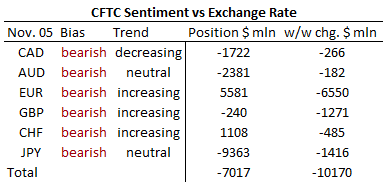

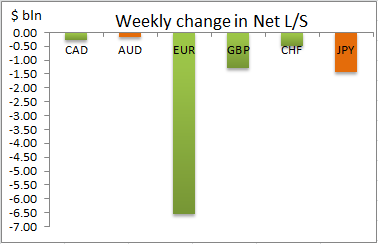
Net short position on the Canadian dollar increased by $266 million, continuing its bearish bias and at the same time the trend on the exchange rate is negative for the Canadian. Net short reached $-1.7 billion and the sentiment remains negative.
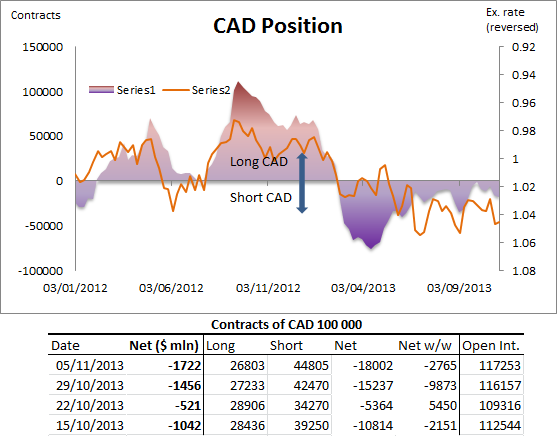
The Australian dollar didn’t change much compared to other currencies, it had the smallest position change against the US dollar. The Net short position increased by $182 mln to -$2.4bln.
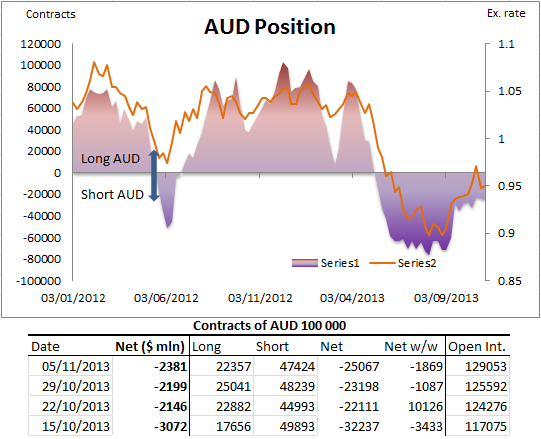
The greatest change over net positioning has been on the Euro. The overall long position narrowed by $6.5 bln reaching ultimately $5.6 bln Net Long. Please note that this is the second consecutive week of deterioration in Euro net position. The negative sentiment now prevails, the exchange rate trend is still positive but weaker.
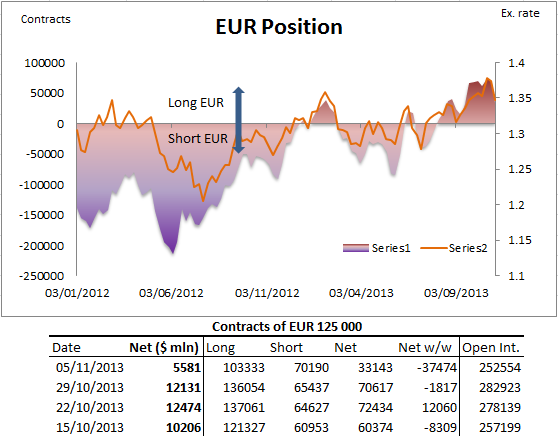
The British pound Net position dropped to negative area and is now at Net Short by $240 mln. The w/w negative transition amounted to $1.27 bln, sentiment is thus negative but exchange rate trend is rising.
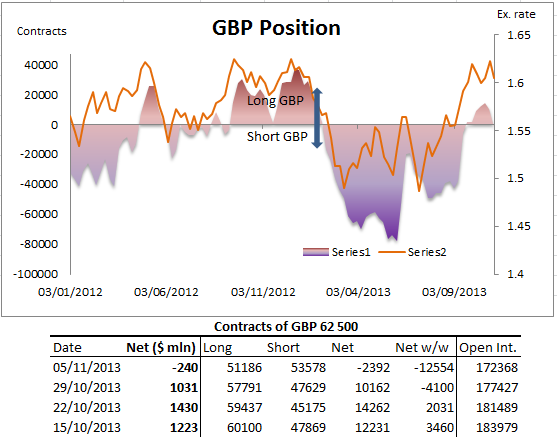
The net long position on the Swiss franc narrowed to $ 1.1 bln, sentiment is now bearish as w/w change was negative, the trend remains positive but vulnerable.
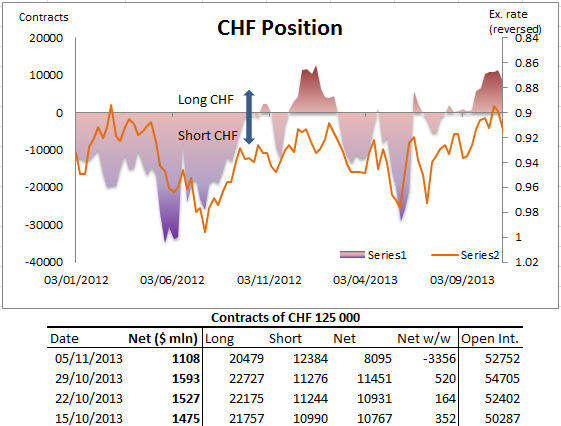
Yen firmly keeps the leadership on holding the largest net short position against the US dollar and still widening its short side reaching by Nov.5 $-9.4 bln amount, w/w declined by $1.4 bln strengthening bears.
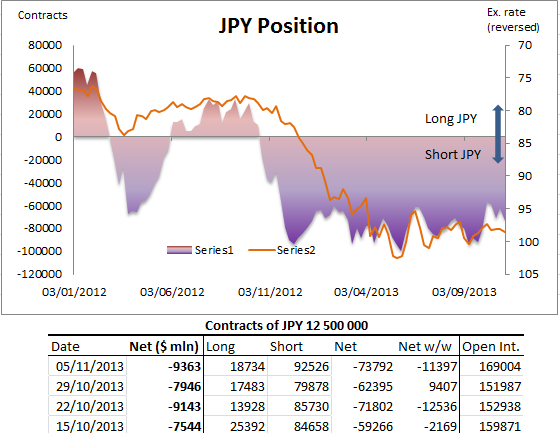
New Exclusive Analytical Tool
Any date range - from 1 day to 1 year
Any Trading Group - Forex, Stocks, Indices, etc.
Note:
This overview has an informative and tutorial character and is published for free. All the data, included in the overview, are received from public sources, recognized as more or less reliable. Moreover, there is no guarantee that the indicated information is full and precise. Overviews are not updated. The whole information in each overview, including opinion, indicators, charts and anything else, is provided only for familiarization purposes and is not financial advice or а recommendation. The whole text and its any part, as well as the charts cannot be considered as an offer to make a deal with any asset. IFC Markets and its employees under any circumstances are not liable for any action taken by someone else during or after reading the overview.
Last Sentiments
- 18Mar2021Weekly Top Gainers/Losers: Canadian dollar and Japanese yen
Over the past 7 days, prices for oil, non-ferrous metals and other mineral raw materials decreased but still remained high. As a result, the currencies of the commodity countries strengthened: the Canadian dollar, the Australian and New Zealand dollars, the Mexican peso, and the South African rand. The...
- 10Mar2021Weekly Top Gainers/Losers: Canadian dollar and New Zealand dollar
Оil quotes continued to rise over the past 7 days. Against this background, the currencies of oil-producing countries, such as the Russian ruble and the Canadian dollar, strengthened. The New Zealand dollar weakened after the announcement of negative economic indicators: ANZ Business Confidence and...
- 4Mar2021Weekly Top Gainers/Losers: American dollar and South African rand
Over the past 7 days, oil quotes continued to grow. Precious metals, including gold, fell in price. Against this background, the shares of oil companies increased, the Russian ruble strengthened, the Australian and New Zealand dollars, as well as the South African rand, weakened. The US dollar strengthened...






